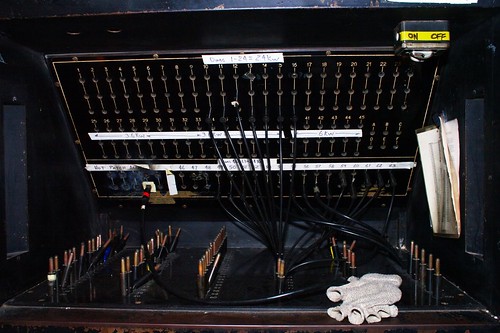On the Ariel Davis system that I used in high school, (1957-1959) we had a very interesting patch panel that had chassis mounted male and female connectors, that were a single pin or socket about 3/8" in diameter. To patch you would use a cable that had a male connector that also had a female connector on the back of the male connector. It had a cord coming out the side of this multigender connector, and at the end of that cord was a female connector. The dimmer outputs were the chassis female connector and the load circuits were the male chassis connectors. You would plug the cable into the dimmer output and run the cable to the load circuit. Then you could piggy back as many cords as you like on the back of each other, running each cable to a circuit. But then again, the lighting instruments were plugged into "Stagejacks" the predecessor of the stage pin. Also we had plano-convex fixtures instead of Fresnel. OK, old timers, I am waiting for I remember older systems than that.
Tom Johnson
Tom Johnson




